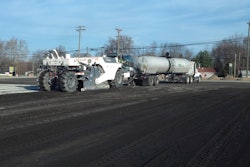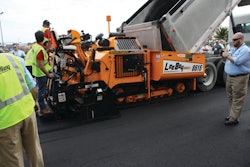Policy makers were provided with flawed environmental modeling results regarding the sources of polycyclic aromatic hydrocarbon compounds (PAHs) in sediments in Austin, TX and Washington State, according to a case study recently accepted for publication in Integrated Environmental Assessment and Management (IEAM).
According to the paper, the flawed model incorrectly identified a specific type of pavement sealer as a significant source of sediment PAHs. In the Austin part of the analysis, the case study confirmed previously published findings that the city’s ban of refined tar-based pavement sealer (RTS) had n identifiable impact on those sediments that were tested both before and after implementation of the ban.
In Washington State, a similar product ban was enacted after the same modeling flaws resulted in RTS being identified as a significant source of PAHs in Lake Ballinger sediment. The case study analysis demonstrated that sediment data from Lake Ballinger “are inconsistent with sealers being a significant source.”
Data from other locations have now been evaluated using the same PAH source identification and apportionment tools used in the case study accepted by IEAM (IEAM is peer reviewed and published by the Society of Environmental Toxicology and Chemistry with the mission of “bridging the gap between scientific research and the application of science in decision making, policy and regulation, and environmental management.”) Results of some of these evaluations have been presented at meetings of environmental scientists and are posted on the PavementCouncil.org website. Posted evaluations include sediments in water bodies from Washington DC, northern Illinois and Long Island, NY, as well as various lakes in Massachusetts.
These additional analyses, along with the case study examples from Austin and Washington, are representative of what has been found in every location analyzed so far – the data “are inconsistent with sealers being a significant source” of sediment PAHs. The evaluations have been conducted by a team of scientists from Exponent ®. The team includes Drs. Kirk O’Reilly, Jaana Pietari and Paul Boehm with input from Drs. Sungwoo Ahn and Stephen Mudge.
PavementCouncil.org says that the analysis presented in the IEAM paper along with the many other forensic assessments conducted on lake sediments around the country adds to the evidence that the USGS has been supporting an agenda to ban RTS products which is based upon flawed “science” and misleading statements. Despite unsupported innuendo to the contrary, RT-sealers have been used safely for more than half a century without any evidence of chronic health effects such as cancer.
PavementCouncil.org funded evaluation of environmental forensic methods, including receptor models, as part of an effort to understand how pavement sealers and other common sources of PAHs, such as vehicle traffic and burning wood, may be contributing to PAHs in the environment.
PavementCouncil.org has also filed three Data Quality Act challenges with the USGS which raise additional concerns regarding the quality of USGS data, methodologies and conclusions as they pertain to the impact of pavement sealers on the environment. Several more DQA petitions are planned.
PavementCouncil.org contends that the actions of the USGS researchers, as described in the O’Reilly et al. paper and in the above mentioned DQA challenges, exemplify a phenomenon known in the scientific literature as “White Hat Bias,” whereby objective science is adversely influenced “. . . by feelings of righteous zeal, indignation toward certain aspects of industry, or other factors.” First identified in the field of obesity research, it is now feared that White Hat Bias has worked its way in the field of environmental research as well.











![Lee Boy Facility 2025 17 Use[16]](https://img.forconstructionpros.com/mindful/acbm/workspaces/default/uploads/2025/09/leeboy-facility-2025-17-use16.AbONDzEzbV.jpg?ar=16%3A9&auto=format%2Ccompress&fit=crop&h=135&q=70&w=240)








